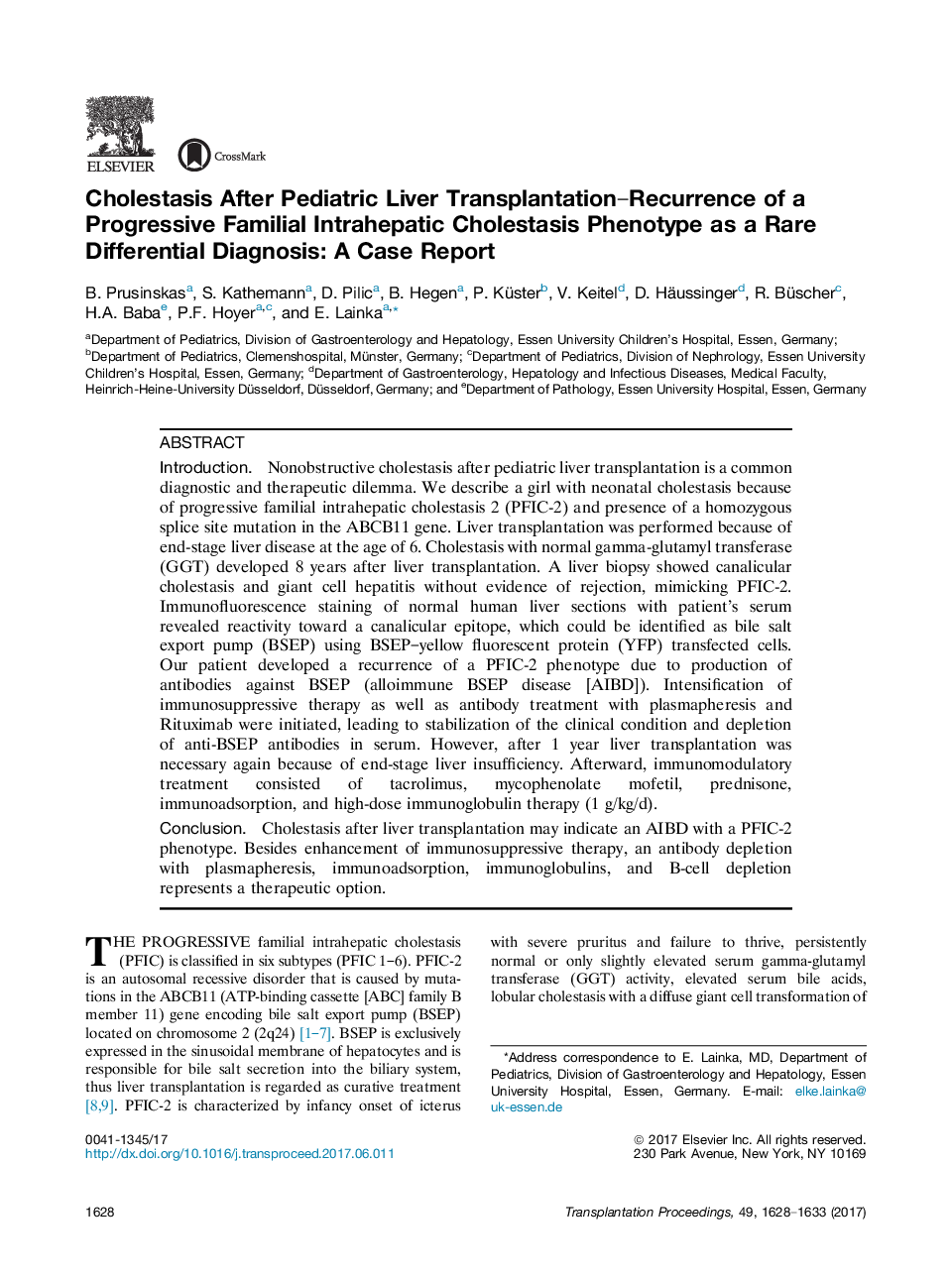| کد مقاله | کد نشریه | سال انتشار | مقاله انگلیسی | نسخه تمام متن |
|---|---|---|---|---|
| 5728749 | 1411670 | 2017 | 6 صفحه PDF | دانلود رایگان |
IntroductionNonobstructive cholestasis after pediatric liver transplantation is a common diagnostic and therapeutic dilemma. We describe a girl with neonatal cholestasis because of progressive familial intrahepatic cholestasis 2 (PFIC-2) and presence of a homozygous splice site mutation in the ABCB11 gene. Liver transplantation was performed because of end-stage liver disease at the age of 6. Cholestasis with normal gamma-glutamyl transferase (GGT) developed 8 years after liver transplantation. A liver biopsy showed canalicular cholestasis and giant cell hepatitis without evidence of rejection, mimicking PFIC-2. Immunofluorescence staining of normal human liver sections with patient's serum revealed reactivity toward a canalicular epitope, which could be identified as bile salt export pump (BSEP) using BSEP-yellow fluorescent protein (YFP) transfected cells. Our patient developed a recurrence of a PFIC-2 phenotype due to production of antibodies against BSEP (alloimmune BSEP disease [AIBD]). Intensification of immunosuppressive therapy as well as antibody treatment with plasmapheresis and Rituximab were initiated, leading to stabilization of the clinical condition and depletion of anti-BSEP antibodies in serum. However, after 1 year liver transplantation was necessary again because of end-stage liver insufficiency. Afterward, immunomodulatory treatment consisted of tacrolimus, mycophenolate mofetil, prednisone, immunoadsorption, and high-dose immunoglobulin therapy (1 g/kg/d).ConclusionCholestasis after liver transplantation may indicate an AIBD with a PFIC-2 phenotype. Besides enhancement of immunosuppressive therapy, an antibody depletion with plasmapheresis, immunoadsorption, immunoglobulins, and B-cell depletion represents a therapeutic option.
Journal: Transplantation Proceedings - Volume 49, Issue 7, September 2017, Pages 1628-1633
